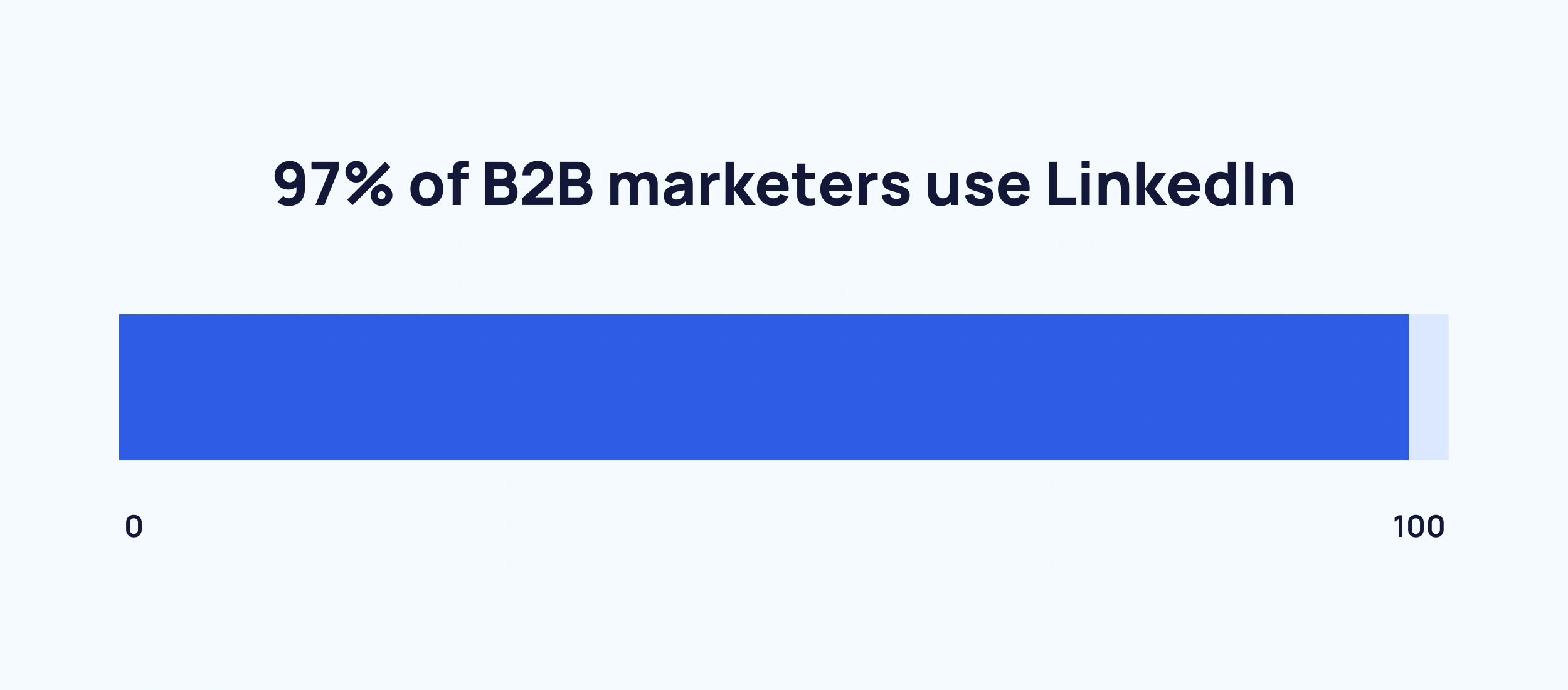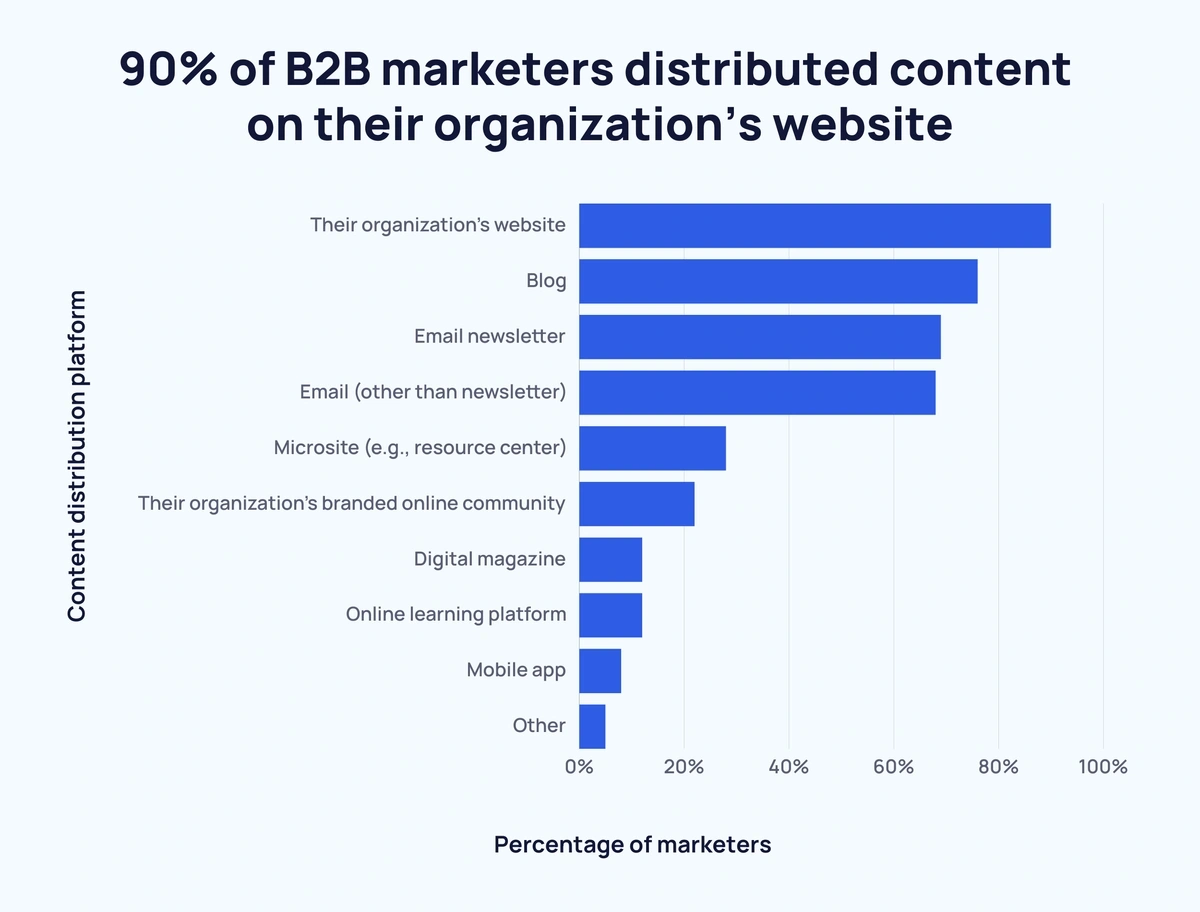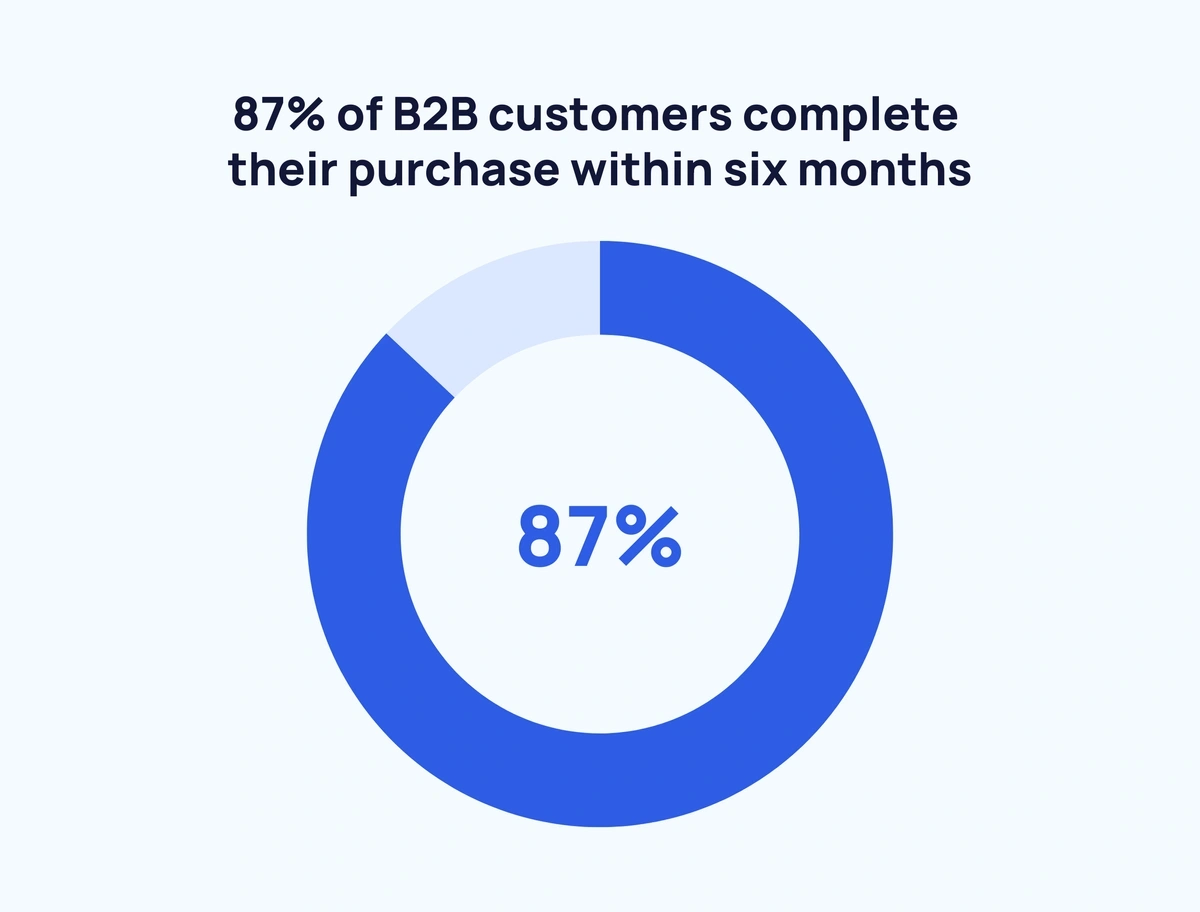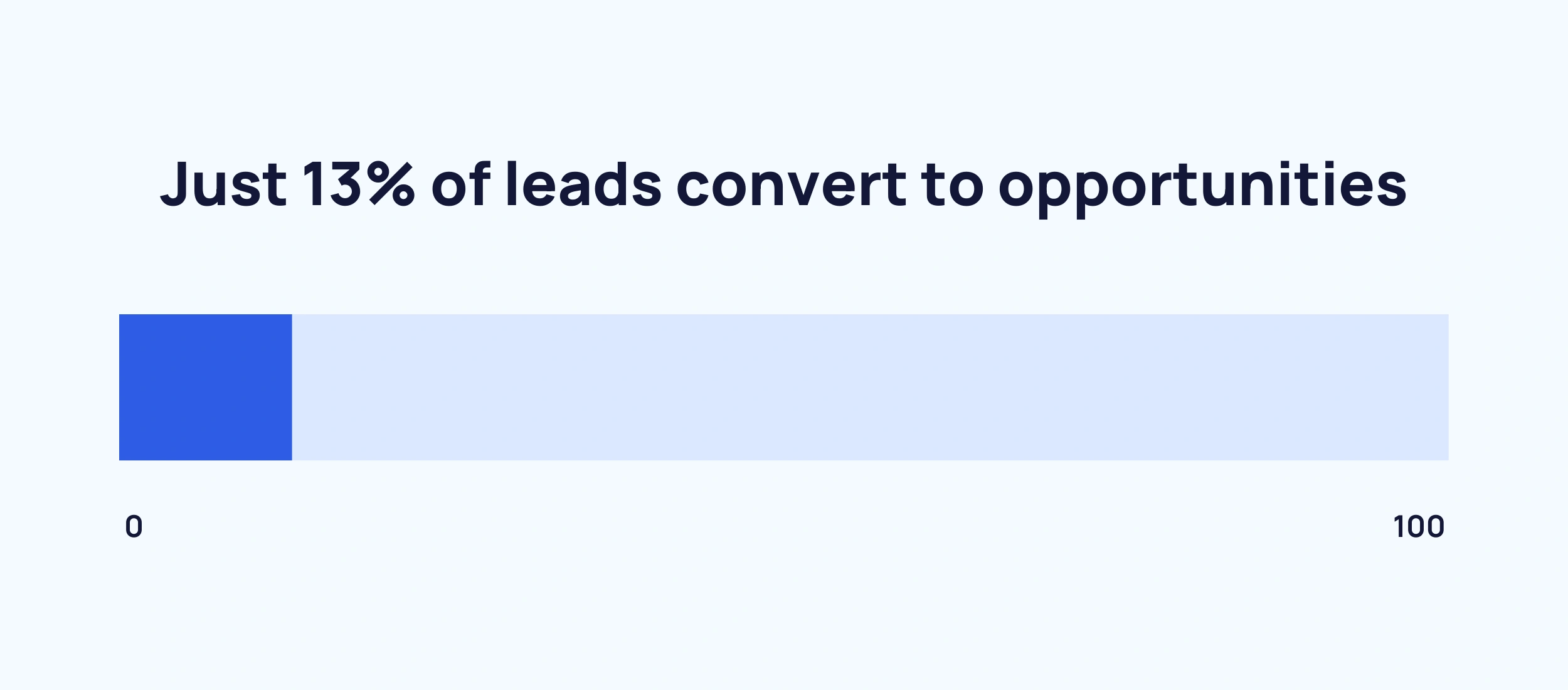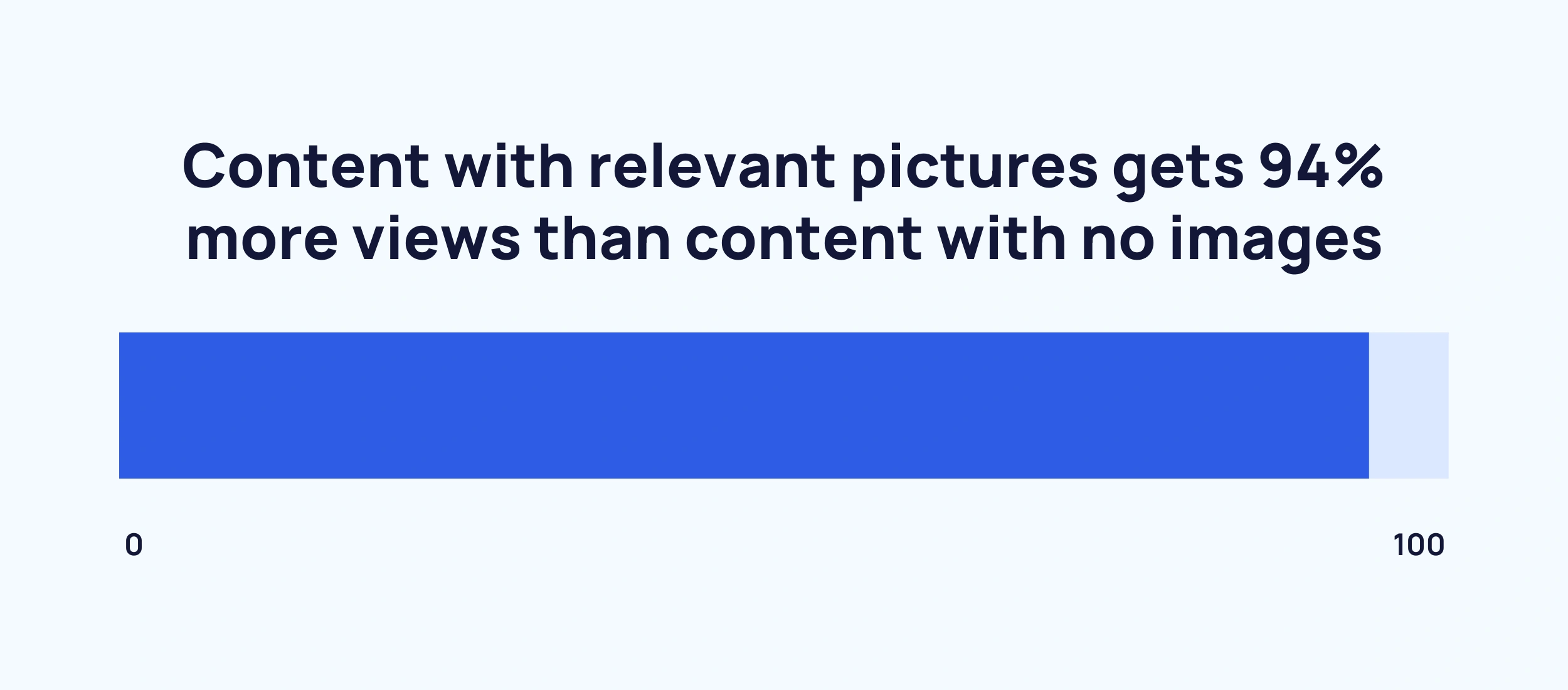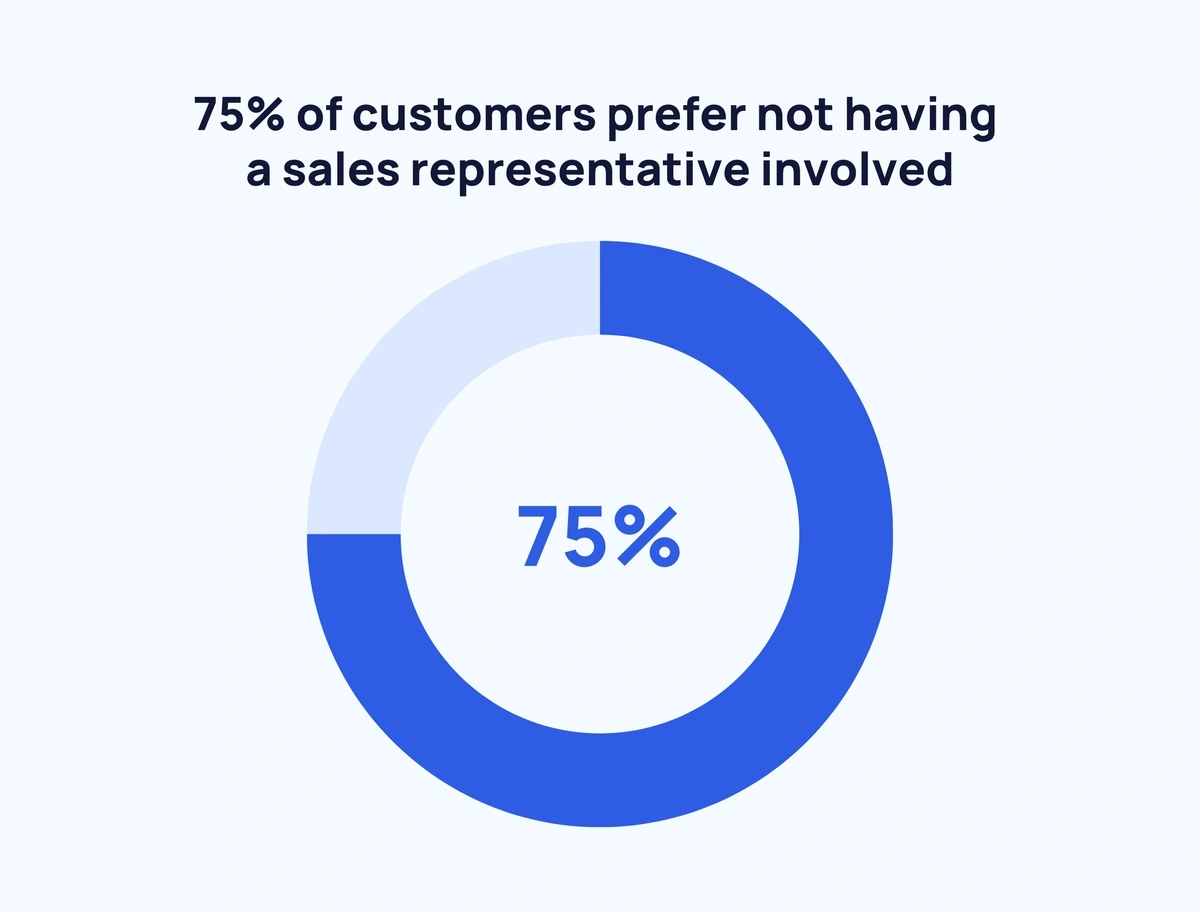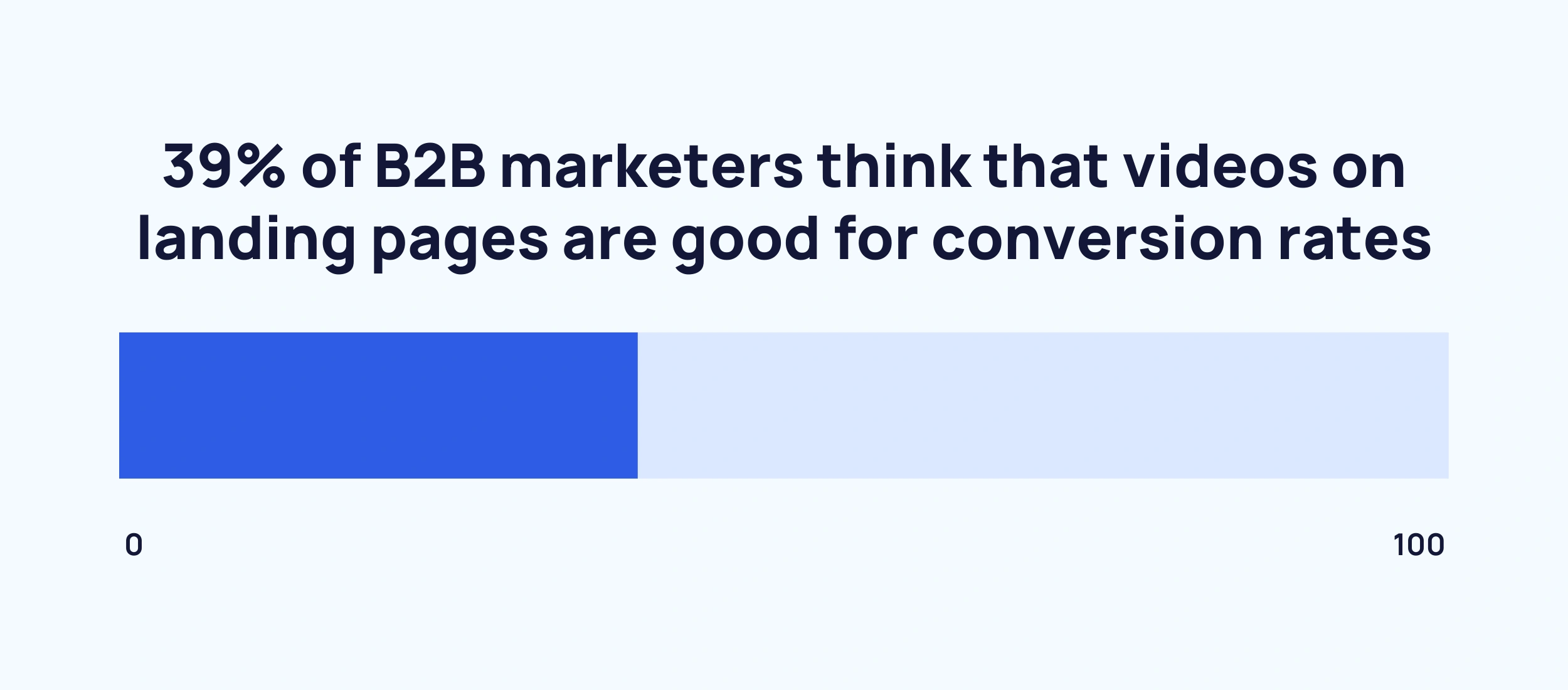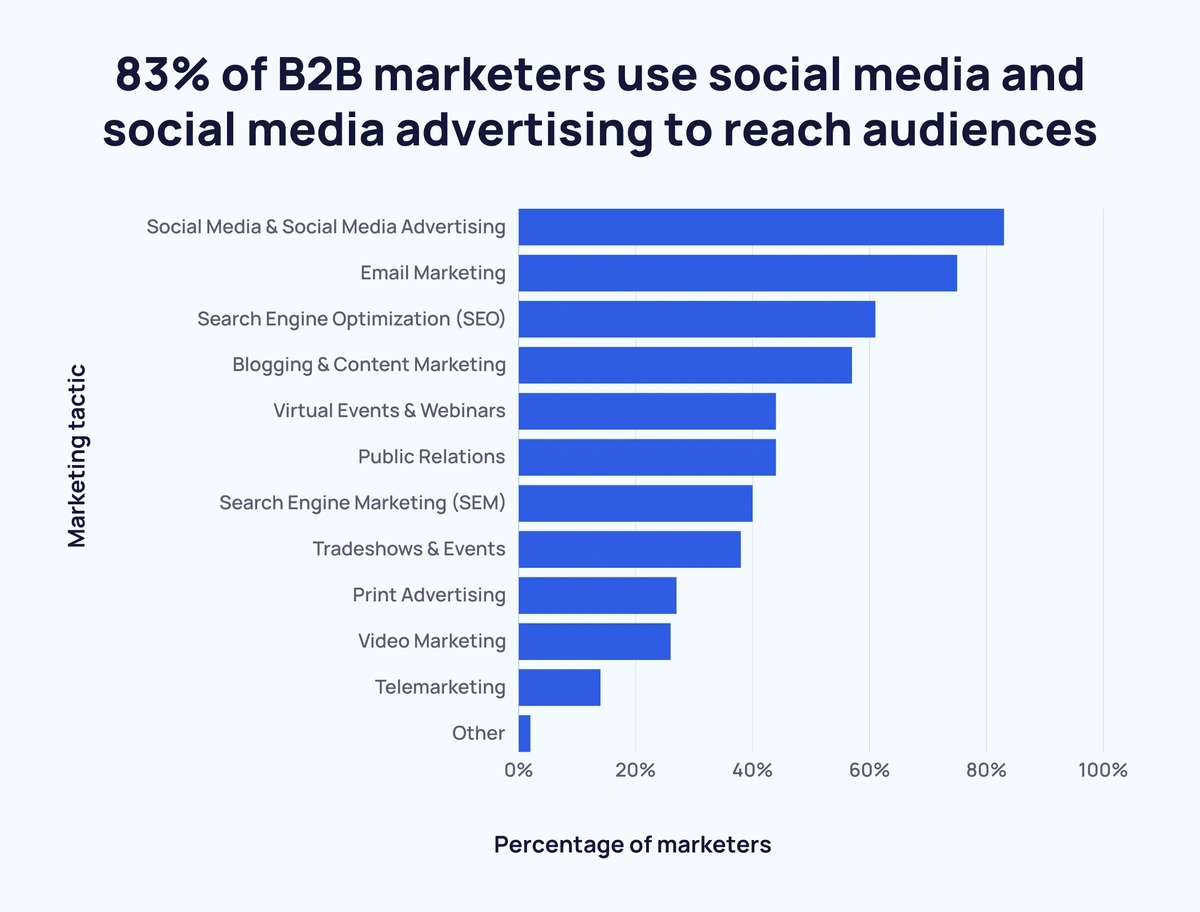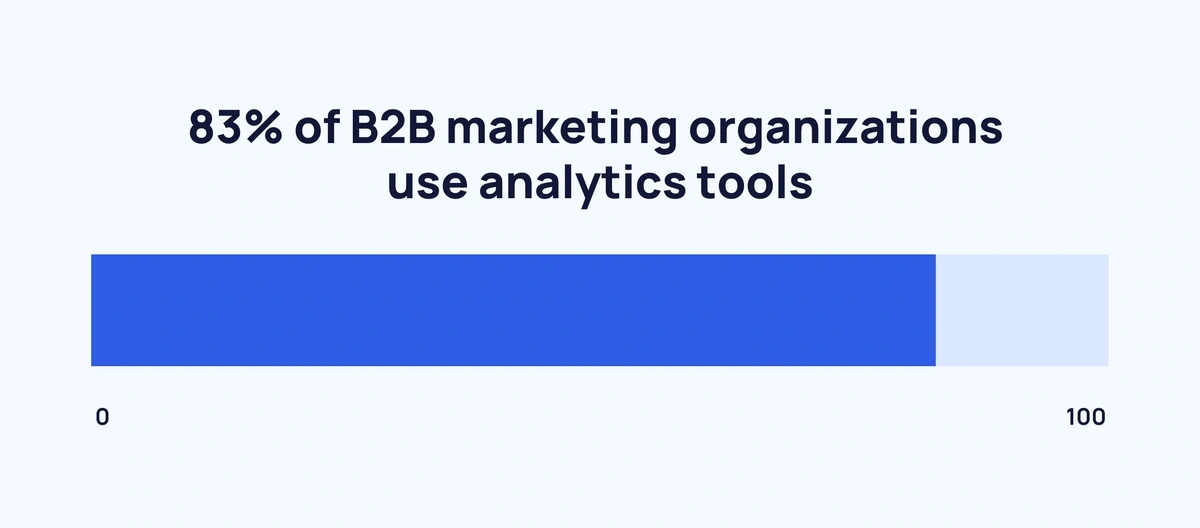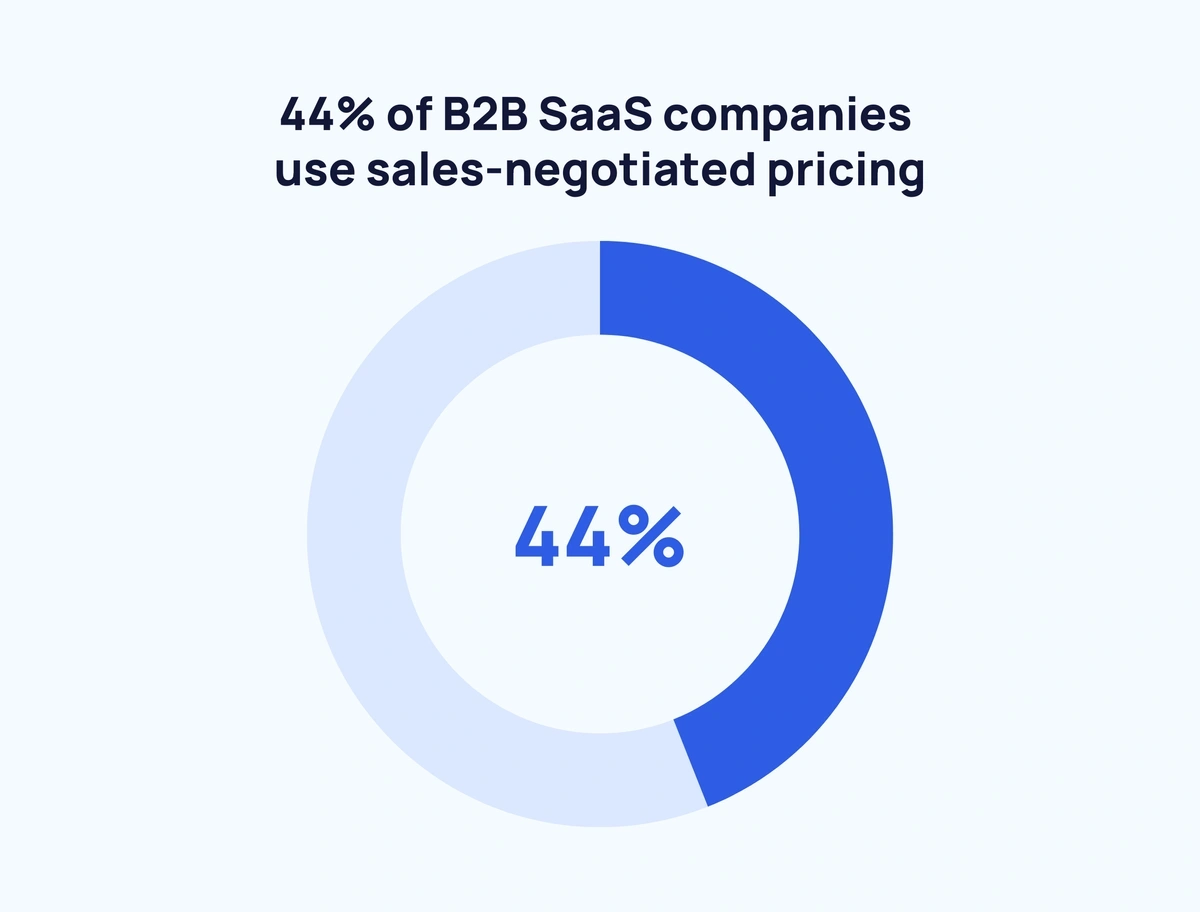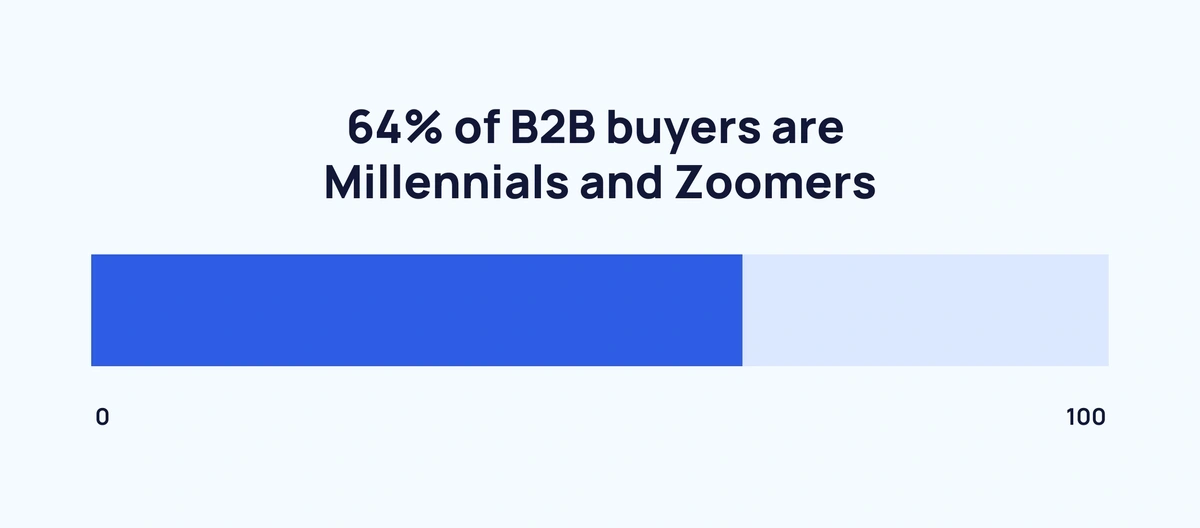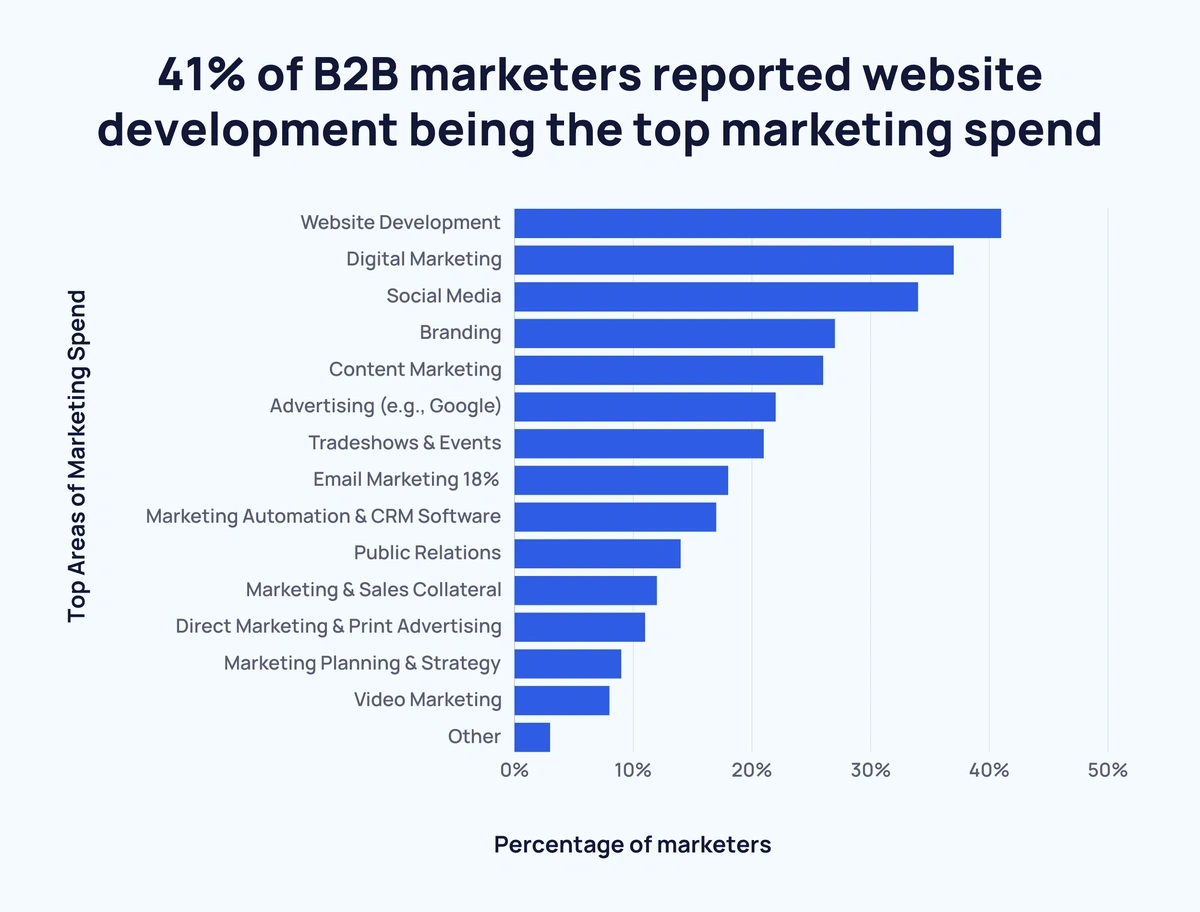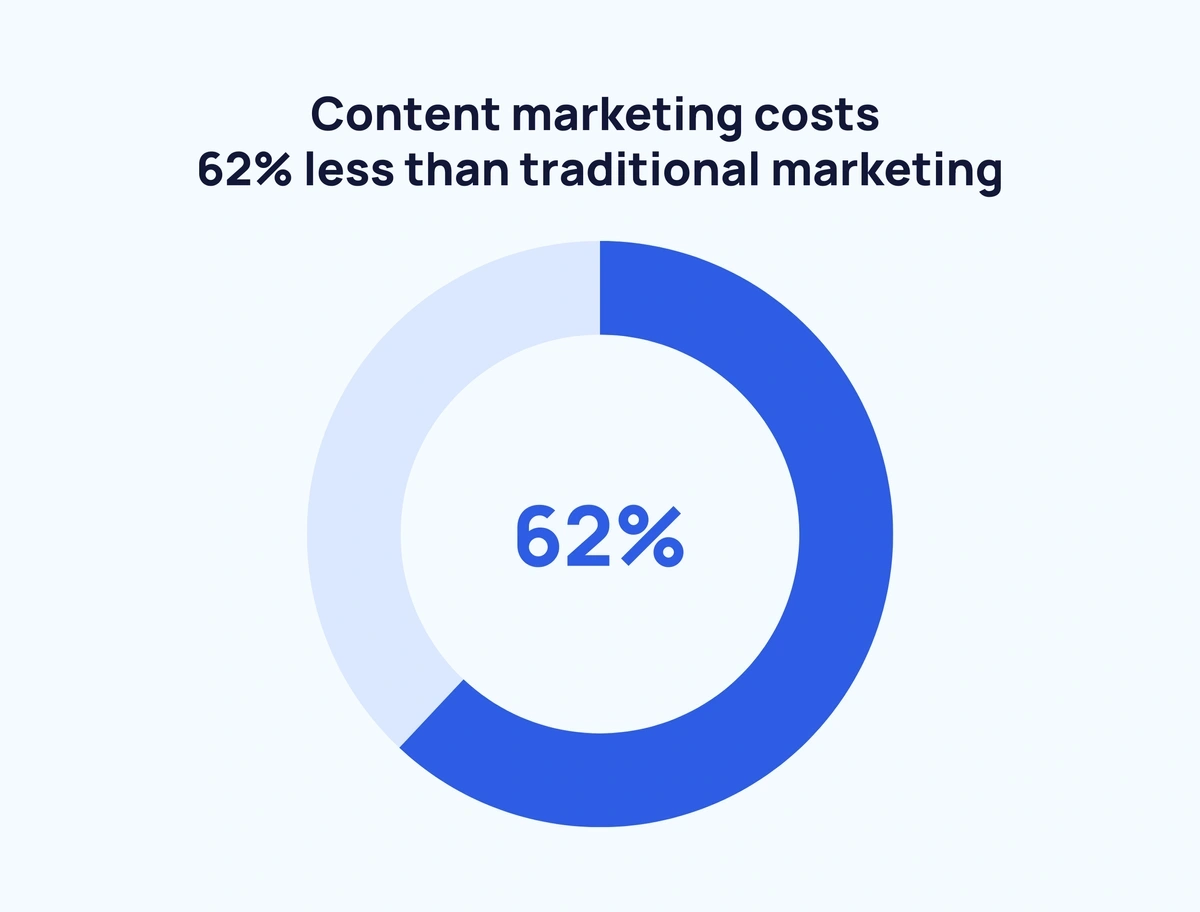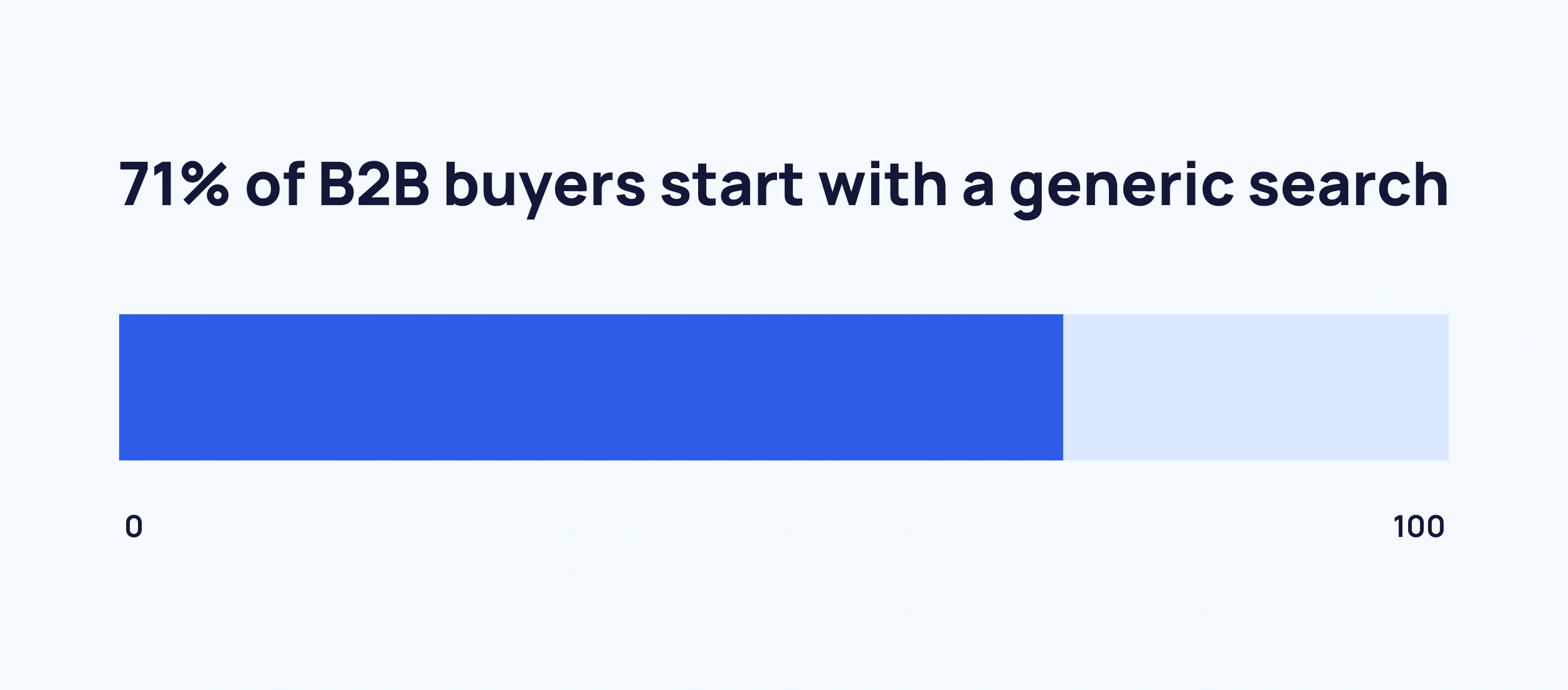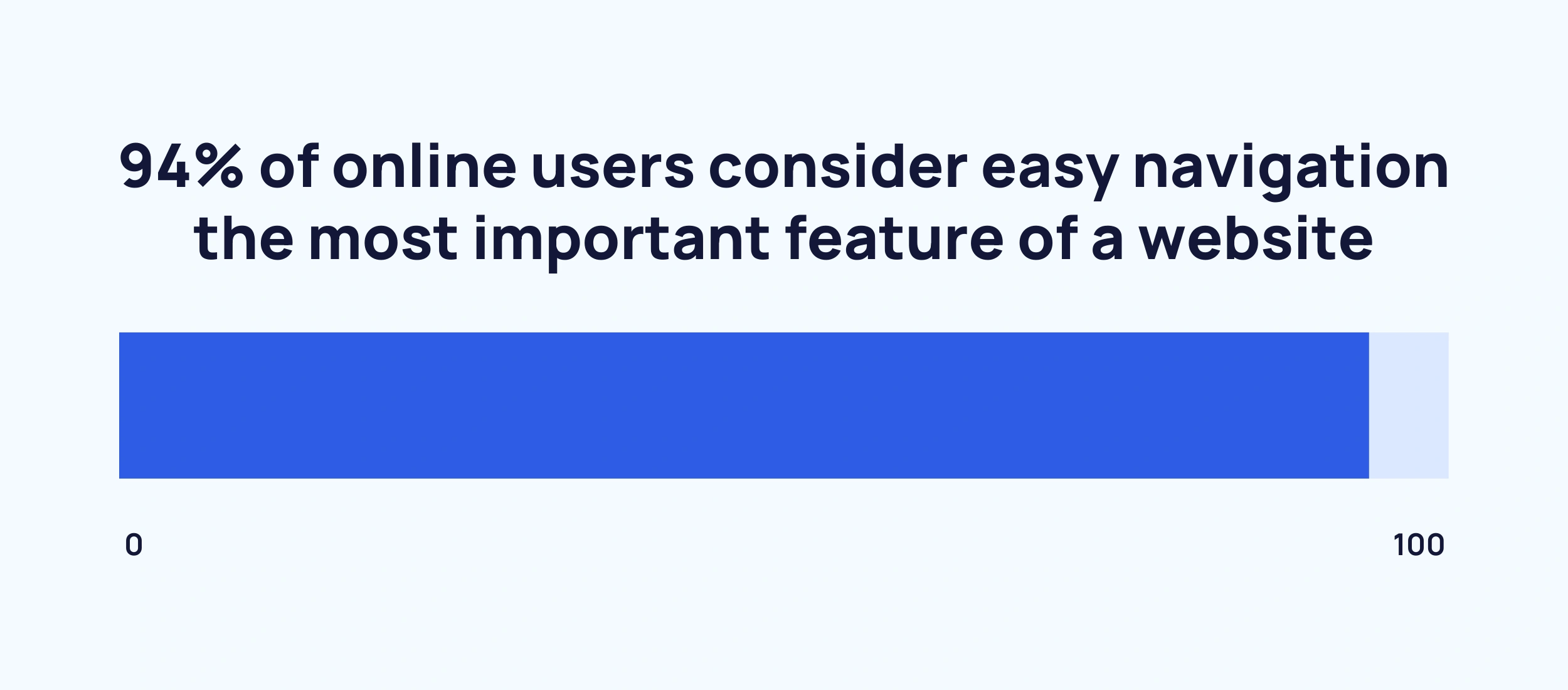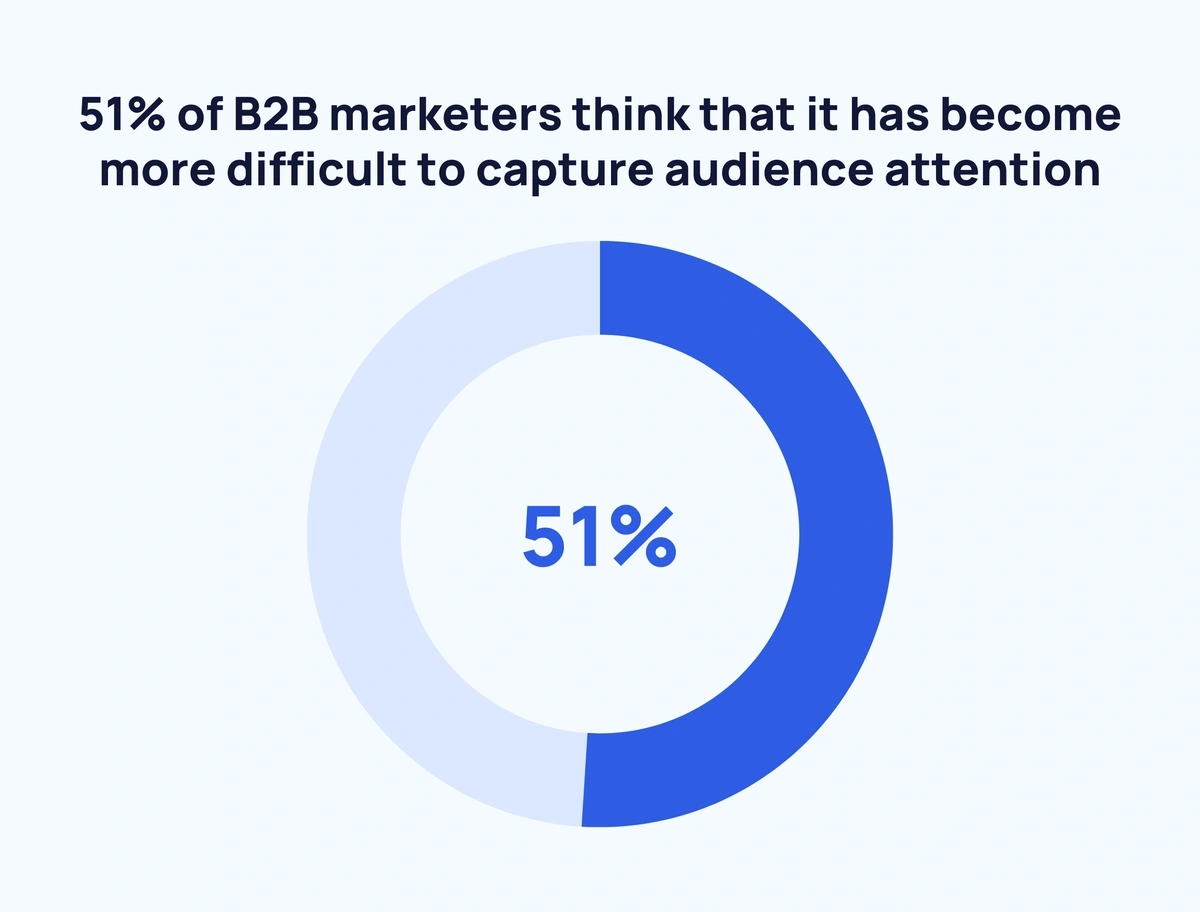
60+ B2B Marketing Stats (2024)
This is a comprehensive list of statistics and trends in B2B marketing.
B2B — business-to-business — marketing is a crucial factor in the success of any brand. In the US alone, companies spend tens of billions of dollars on B2B marketing every year.
But where does all that money go? Which methods actually produce results? And how is the B2B marketing landscape changing?
In this article, we’ll dive into the fast-paced world of B2B marketing.
Editor’s Picks
- A third of B2B marketers still use live events, narrowly making them the most popular B2B marketing strategy
- 90% of B2B marketers post content on their company’s website
- Just 0.78% of leads are converted into actual deals
- Two-thirds of B2B marketers use generative AI to help with content creation
- But only 46% of them work with influencers
- 25% of B2B marketers don’t measure the performance of their marketing content
- 68% of B2B marketers think the industry has changed more in the last three years than in the previous 50
Where B2B Marketing Happens
97% of B2B marketers use LinkedIn (LinkedIn)
LinkedIn is undoubtedly the most famous “professional” social media platform, so it’s not surprising that the vast majority of B2B marketers use it to market their content. After all, the platform reaches around 200 million users in the US alone.
40% of B2B marketers rate LinkedIn as the most effective channel for lead generation (Sprout Social)
That’s probably why 35% of B2B marketers consider LinkedIn the most important social media platform. Almost two-thirds of B2B marketers told Sprout Social that LinkedIn generates leads for them.
16% of B2B marketers will utilize YouTube for the first time this year (HubSpot)
As the buying power of Millennials and Zoomers increases, marketers will increasingly have to go to new places to reach young audiences. That potentially means diversifying from classics like email and LinkedIn to new platforms like YouTube. A similar number of B2B marketers — 15% — will leverage TikTok and X (formerly Twitter) for the first time this year.
But LinkedIn is still top, with 17% of B2B marketers planning on investing the most there this year (HubSpot)
That’s followed by TikTok and Instagram, with 13% of respondents planning on spending the most on those platforms.
Physical events are still the most-leveraged B2B marketing strategy, with 33% of marketers using it (HubSpot)
Trade shows and other physical events remain vital in the B2B marketing space. However, the in-person strategy only narrowly beats out website and blog SEO, which 32% of marketers report using.
71% of B2B marketers use Facebook (Sage Frog)
That made Facebook the second-most popular social media channel among B2B marketers in 2022. It was beaten by — any guesses? — LinkedIn.
90% of B2B marketers distributed content on their organization’s website (CMI)
Websites remain the most popular place for distributing marketing content. Blogs, newsletters, and other emails are also popular.
B2B Marketing Timelines
58% of buyers are likely to switch if their current provider is too slow (Zipdo)
The timeline of closing a deal isn’t the only one to consider. Once you’ve got a customer, you need to remain on top of their needs. If you take too long, most of them will simply leave for a vendor who will get them what they want, quicker.
On average, a lead is converted to an opportunity in 84 days (Salesforce)
The process of converting a lead to an opportunity is often painfully long. Remember, 84 days is just the average — in some cases, conversion takes much longer.
But going from opportunity to deal takes an average of 18 days (Salesforce)
It seems the hard part, at least in terms of time spent, is getting to an opportunity. Closing a deal is comparatively much quicker — about four and a half times quicker, in fact, on average.
87% of B2B customers complete their purchase within six months (TrustMedia)
The process takes a little longer for enterprise B2B customers, with 65% completing their purchase within six months, and 87% completing their purchase within a year.
B2B Marketing Success Rates
On average, B2B sales representatives need to make eight cold calls to reach a prospect (Zipdo)
Even high-performing B2B marketers, then, often end up spending more time pursuing leads than closing deals.
69% of B2B marketers have the required data to reach their audience (HubSpot)
Just 12% said they lacked this crucial data. It almost goes without saying, but knowing your audience is a crucial step in effectively reaching them.
Just 13% of leads convert to opportunities (Salesforce)
The poor conversion rate from leads to opportunities underscores the importance of getting as many leads as possible. Ensuring those leads are high quality is also vital.
And just 6% of opportunities convert to deals (Salesforce)
Converting an opportunity into a deal is apparently even more difficult and rare than converting a lead into an opportunity.
Which means that only 0.78% of leads are successfully converted into deals (Salesforce)
The low conversion rate of leads into deals demonstrates the importance of generating as many high-quality leads as possible.
3.6% of leads generated via employee or customer referrals convert to deals (Salesforce)
That might seem low — and it is — but it actually makes referrals the most successful source of leads. Research by Salesforce suggests that company websites and social media are also good lead sources. The worst, at least in terms of the proportion of generated leads that are actually converted to deals, are lead lists, events, and email campaigns.
Content with relevant pictures gets 94% more views than content with no images (MDG)
Pictures are a great way to boost the reach and retention rate of your content. Relevant images will catch more people’s attention, keep them engaged for longer, and make it more likely that they will remember what you were trying to tell them.
But content marketing generates 3x the leads as traditional methods, per dollar spent (Demand Metric)
Content marketing is apparently far more efficient at generating leads than traditional marketing methods. This efficiency is all the more important when considering the fact that the vast majority of leads are not converted into actual deals.
B2B Marketing Methods
75% of customers prefer not having a sales representative involved (Gartner)
This doesn’t mean a totally human-free experience is the way forward, though. Instead, Gartner recommends adopting a hybrid approach, where the “right mix of digital and human interaction” is found to “drive profitable purchase decisions.”
66% of B2B marketing companies use AI tools (HubSpot)
In just a few years, AI has already been adopted by two-thirds of B2B marketers. As AI tools become more powerful, sophisticated, and accurate, that figure may well increase.
But 61% of B2B marketing organizations have no guidelines for using AI tools (CMI)
A concerningly high number of organizations lack any formal guidance on the use of AI tools, and B2B marketing is no exception.
Landing pages are one of the most popular lead generation methods, with 44% of B2B marketers using them (HubSpot)
Landing pages are a classic lead generation method. They are closely followed by customers or direct purchases, which 34% of B2B marketers reported using for generating leads.
39% of B2B marketers think that videos on landing pages are good for conversion rates (HubSpot)
That’s not an overwhelming number. Whether to utilize video in a landing page is a tricky decision. Videos that play automatically are particularly contentious. They’ve proliferated across the web in recent years, but seem to be widely disliked.
Just 46% of B2B marketers worked with influencers in 2023 (HubSpot)
That might seem surprisingly small, considering the — well — “influence” that online creators seem to wield in today’s digital economy. However, that figure may rise, as younger consumers have reported turning to influencers for product recommendations in higher numbers than older consumers.
70% of B2B marketers use a formal marketing plan (Sage Frog)
While marketing does require creativity and flexibility, the vast majority of marketers still prefer planning everything out.
73% of B2B marketers use content creation, calendaring, collaboration, or workflow tools (CMI)
Digital tools have exploded in popularity recently, and there are plenty of reasons why. They help marketing teams stay on top of often complex plans.
90% of B2B marketers use short articles or posts (CMI)
That made short-form written content the most popular content asset used by B2B marketers. It was followed by videos (66%), virtual events and webinars (64%), and case studies (61%). The least popular asset was print magazines or books, which was used by just 17% of B2B marketers — less than those using live-streamed content, in-person events, research reports, and podcasts.
83% of B2B marketers use social media and social media advertising to reach audiences (Sage Frog)
That makes social media the most popular tactic among B2B marketers. Interestingly, print advertising — one of the most dominant forms of marketing for centuries — is used three times less. Today, print is one of the least popular B2B marketing tactics.
54% of B2B marketers get leads from referrals (Sage Frog)
That makes referrals the most popular source of leads for B2B marketers.
61% of B2B marketers use automation software (Sage Frog)
HubSpot was, by far, the most popular marketing automation software among B2B marketers. Some 47% reported using the software, far more than any other individual automation software.
83% of B2B marketing organizations use analytics tools (CMI)
That made analytics tools — which include web analytics, dashboards, and so on — the most popular technology used by B2B marketing organizations to help them market content. Analytics tools were closely followed by social media publishing tech (80%), email marketing software (75%), and content creation workflow tech (73%).
80% of B2B marketers highly value creativity and craft when creating content (CMI)
It seems obvious that creativity and craft would result in better marketing, but a surprisingly high proportion of marketers apparently don’t value them. Interestingly, the percentage of B2B marketers that highly valued these ideals when creating content is far higher in companies with the most successful marketing — 92% — than among those with the least successful marketing — 63%. In this case, “success” was defined by how respondents felt their organization’s marketing had performed.
61% of B2B marketers see a return on investment from social media marketing (Sage Frog)
Social media marketing can be done on the cheap, which might be why almost two-thirds of B2B marketers see an ROI on this marketing tactic.
75% of B2B marketers said their organization measures the performance of their marketing content (CMI)
Measuring the performance of content allows B2B marketers to see what’s working and what’s not — and, therefore, to improve and optimize their ROI.
Top B2B sales performers ask and receive 39% more questions on discovery calls than average (Sales Insights Lab)
Research from the same group also suggests that top sales performers also let the potential customer do more talking. Getting the customer asking questions seems to be important to landing sales.
But they discuss actual product features 50% less (Sales Insights Lab)
This might seem counterintuitive. However, the research clearly shows that sales reps who talk less about product features perform better than average. Perhaps it means more time spent connecting with potential customers or letting them ask questions.
SEO was the top source of lead generation for 34% of B2B marketers in 2022 (Sage Frog)
Despite the difficulties of keeping up with a constantly shifting environment, SEO remains a key source of lead generation in B2B marketing.
Remote sales representatives can reach 4x the accounts in the same amount of time (Mckinsey)
That’s probably not that surprising, considering the difficulties of conducting sales physically. However, it also means that remote sales representatives can generate up to 50% more revenue than their in-person counterparts.
44% of B2B SaaS companies use sales-negotiated pricing (Maxio)
This statistic comes from a study of 250 B2B SaaS (Software as a Service) companies. Sales-negotiated pricing is the most popular model. It’s followed by fixed pricing, which is used by 34% of companies, and variable pricing, which is used by 24% of companies.
29.6% of B2B customers consider free trials the most influential resource used during purchase research (TrustRadius)
In total, 40% of B2B customers surveyed in this study used free trials while researching a particular software product. Of that 40%, 74% considered that free trial the most important resource they consulted while deciding whether to buy a product. Despite all that, free trials were not in the top five B2B marketing strategies reported by sellers in the study. Perhaps B2B marketers need to focus more on free trials.
Who Is Involved in B2B Marketing
64% of B2B buyers are Millennials and Zoomers (Digital Commerce 360)
The dominance of young customers will only increase in the coming years. Understanding how to market to them, then, will also become all the more important. And that’s not easy: the same research shows that younger customers are 23.6% more likely to be dissatisfied with at least one thing about their vendor than older customers.
51% of companies use both in-house and outsourced B2B marketing (Sage Frog)
A mix of in-house and outsourced B2B marketing seems to be the most popular approach. That being said, 41% of companies only use in-house B2B marketing. Solely outsourcing, then, is by far the least popular method.
But 75% of companies outsourced B2B marketing at least once (CMI)
That figure applies to 2021. In comparison, the year before just 61% outsourced.
58% of the companies with the least successful marketing had zero full-time employees dedicated to content marketing (CMI)
Just 17% of the companies with the least successful marketing had two or more full-time employees dedicated to content marketing. In comparison, 54% of the most successful companies had a dedicated, full-time marketing team of at least two people.
Where B2B Marketing Money Goes
93% of B2B marketers will increase or maintain their SEO budgets this year (HubSpot)
As one of the most popular marketing strategies, it’s no surprise that B2B marketers are investing big bucks into SEO. Half of all B2B marketers surveyed by HubSpot said they planned to increase their SEO budget this year, while 43% said they would invest the same amount of money as they did last year.
41% of B2B marketers reported website development being the top marketing spend (Sage Frog)
Brands are apparently spending big on digital marketing. Website development, digital marketing in general, and social media were the top three areas of marketing spend.
22% of B2B marketers spend at least half of their marketing budget on content marketing (CMI)
Interestingly, companies with more successful marketing were more likely to spend big on content. While 32% of the companies that were most successful at marketing spent 50% or more of their marketing budget on content marketing, just 8% of the least successful companies did so.
56% of companies spend between 10% and 74% of their marketing budget on B2B content marketing (CMI)
Interestingly, there is a wide distribution of spending on B2B content marketing. The most popular spend was between 10% and 24% of total marketing budgets, with 26% of organizations reporting spending this much. Just 3% of organizations spent their entire marketing budget on B2B content marketing. Conversely, 5% of organizations spent nothing on B2B content marketing.
71% of buyers would spend over $50,000 on a single B2B transaction (McKinsey)
Buyers are willing to spend big — at least according to research from McKinsey. In fact, 27% of buyers would apparently spend $500,000 or more in a single transaction.
Content marketing costs 62% less than traditional marketing (Demand Metric)
Content marketing is significantly cheaper than other, traditional marketing methods. That makes it easier to produce, and to produce lots of it.
US organizations will spend $37.68 billion on B2B advertising in 2024 (Statista)
In 2022, B2B advertising spending in the US was over $32 billion. That represented a notable increase from 2021, which saw B2B ad spending of $28.86 billion. Should this trend of increased B2B ad spending continue, 2024 will see total spending near $38 billion.
B2B Marketing Targets
96% of B2B buyer shortlists contain five products or fewer (TrustRadius)
When B2B customers do their research, they apparently narrow things right down. In fact, 63% of B2B buyer shortlists are made up of just two or three products.
71% of B2B buyers start with a generic search (Google)
The vast majority of potential B2B buyers start their research process with a generic search. The implication for B2B marketers, then, is that branded searches might not be as important as people might think.
86% of enterprise B2B customers choose products they’d heard of before (TrustRadius)
This underscores the importance of brand awareness. Well over three-quarters of enterprise B2B customers end up going with products that they were aware of before they even started researching their purchase. The figure is slightly lower for B2B buyers overall, but is still over three-quarters: 78%.
50% of consumers base their impression of a brand on its website (Top Design Firms)
Web design is crucial. A great website can leave B2B consumers with a good impression of your brand. The same study concluded that potential buyers want to see images and color (especially blue, green, and primary color schemes in general).
94% of online users consider easy navigation the most important feature of a website (Clutch)
Websites should look good, sure, but above all else they should be easy to navigate. Few things are more frustrating than a confusing website, and a difficult design will scare away potential customers.
49% of B2B customers consult user reviews when deciding whether to buy a product (TrustRadius)
That represents a slight decline from 2023, when 54% of B2B customers responded the same. However, it’s clear that user reviews remain an important factor in whether B2B buyers decide to purchase a product.
The Changing World of B2B Marketing
68% of B2B marketers think their niche has changed more in the last three years compared to the previous half-century (HubSpot)
The pandemic and rollout of AI tools have absolutely revolutionized the marketing industry. B2B marketing is no exception, with more than two-thirds of professionals reporting major changes in the last few years. Interestingly, B2C marketers were even more likely to report major changes, with 76% of them responding positively to the same question.
51% of B2B marketers think that it has become more difficult to capture audience attention over the last few years (CMI)
Today, with so many distractions, it’s harder than ever to catch the attention of any audience — let alone your target audience. Many B2B marketers told the CMI that they had adjusted the tone of their marketing to try and respond to this increasing difficulty.
76% of B2B marketers increased or maintained spending on paid content distribution channels in 2021 (CMI)
Paid distribution channels are becoming increasingly important in the world of digital B2B marketing.
B2B decision-makers used twice as many channels to interact with suppliers in 2022 than in 2016 (McKinsey)
In 2016, B2B decision makers used just five channels to interact with suppliers. By the end of 2021, they were using 10. New channels included mobile apps, video conferences, and web chats.
Conclusion
B2B marketing is changing faster than ever before. The rapid adoption of generative AI tools has only increased the rate of change.
What hasn’t changed, however, is the fact that keeping up with the competition will require B2B marketers to be creative when producing content.
That creativity might be applied to producing articles, videos, or any and all of the various kinds of content used in B2B marketing today.
Regardless, it will be crucial to stand out — because B2B marketing is more popular than ever, and it’s not going away any time soon.
Stop Guessing, Start Growing 🚀
Use real-time topic data to create content that resonates and brings results.
Exploding Topics is owned by Semrush. Our mission is to provide accurate data and expert insights on emerging trends. Unless otherwise noted, this page’s content was written by either an employee or a paid contractor of Semrush Inc.
Share
Newsletter Signup
By clicking “Subscribe” you agree to Semrush Privacy Policy and consent to Semrush using your contact data for newsletter purposes
Written By


Josh is the Co-Founder and CTO of Exploding Topics. Josh has led Exploding Topics product development from the first line of co... Read more

